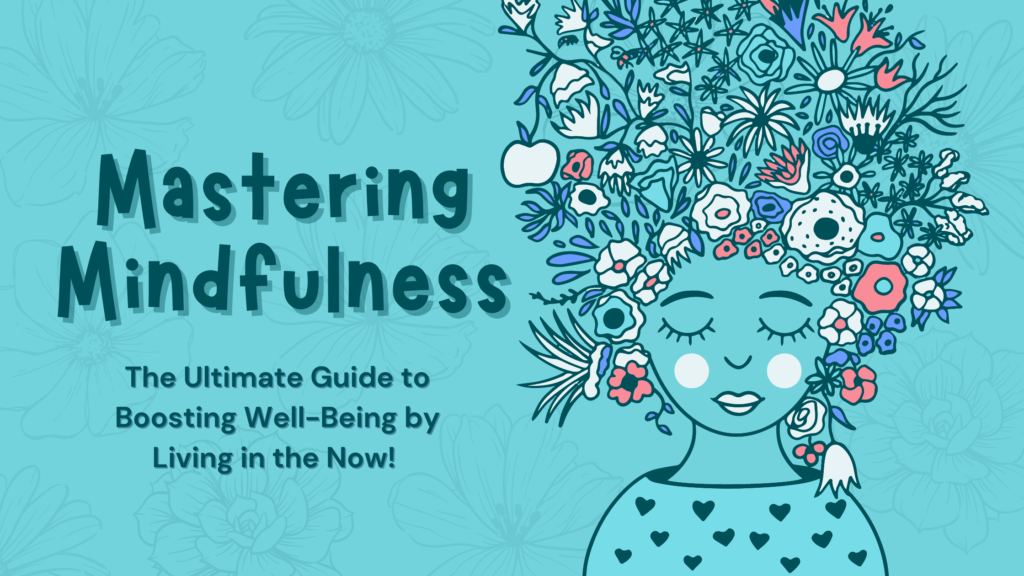Are you tired of feeling like you’re stuck in a cycle of bad habits? Do you want to make lasting changes that will improve your life? If so, you’re in the right place. In this ultimate guide, we will explore the science behind habit change and provide you with practical strategies to replace your bad habits with good ones.
Understanding Habits is key to making lasting changes. Habits are behaviors that we repeat regularly, often without even thinking about them. They can be good or bad, and they can have a significant impact on our lives. By understanding how habits work, we can begin to take control of them and make changes that will stick. In the following sections, we will explore how to identify your bad habits, steps to master habit change, and expert advice on habit change. We will also provide a case study of successful habit change and answer frequently asked questions about habit change.
Key Takeaways
- Understanding how habits work is key to making lasting changes.
- Identifying your bad habits is the first step to replacing them with good ones.
- By following practical strategies and expert advice, you can master habit change and improve your life.
Understanding Habits
Habits are an integral part of our lives. They are the actions that we do repeatedly, often subconsciously, without thinking about them. Habits can be good or bad, and they can have a significant impact on our lives. In this section, we will explore the science behind habits, how habits are formed, and the difference between good and bad habits.
The Science Behind Habits
Habits are deeply ingrained in our brains. They are formed in a part of the brain called the basal ganglia, which is responsible for the formation of memories and the regulation of emotions. When we perform a habit, our brains release dopamine, a neurotransmitter that makes us feel good. This reinforces the behavior, making it more likely that we will repeat it in the future.
How Habits are Formed
Habits are formed through a process called habituation. When we perform a behavior repeatedly, our brains begin to associate that behavior with a particular cue or trigger. For example, if we always eat a cookie when we feel stressed, our brains will begin to associate stress with eating cookies. Over time, this association becomes stronger, until the behavior becomes automatic and unconscious.
Good Habits vs. Bad Habits
Not all habits are created equal. Some habits are good for us, while others are bad. Good habits are behaviors that have a positive impact on our lives. They can improve our health, productivity, and well-being. Examples of good habits include exercising regularly, eating a healthy diet, and getting enough sleep.
Bad habits, on the other hand, are behaviors that have a negative impact on our lives. They can be harmful to our health, productivity, and relationships. Examples of bad habits include smoking, overeating, and procrastinating.
In conclusion, understanding habits is essential if we want to change them. By knowing how habits are formed and the science behind them, we can develop strategies to replace bad habits with good ones. By making small changes to our behavior, we can create new habits that will have a positive impact on our lives.
Identifying Your Bad Habits
As we embark on the journey of mastering habit change, the first step is to identify our bad habits. It’s essential to understand what habits we want to replace with good ones. In this section, we’ll explore various techniques to help us identify our bad habits.
Self-Reflection and Self-Awareness
The first step in identifying our bad habits is self-reflection and self-awareness. We need to take an honest look at ourselves and identify the habits that are holding us back. It’s essential to be objective and non-judgmental during this process. We can start by asking ourselves questions like:
- What habits do I have that are not serving me?
- What are the triggers for these habits?
- What are the rewards that I get from these habits?
Self-reflection and self-awareness help us to become more conscious of our actions and behaviors. It allows us to identify the patterns that lead to our bad habits.
Keeping a Habit Journal
Another effective technique to identify our bad habits is to keep a habit journal. It’s a simple yet powerful tool that helps us track our behaviors and habits. We can start by writing down the habits that we want to change and then track our progress.
In the habit journal, we can note down the triggers that lead to our bad habits and the rewards that we get from them. We can also record how we feel before and after engaging in the habit. Keeping a habit journal helps us to become more aware of our actions and behaviors.
Analyzing the Triggers and Rewards
The third technique to identify our bad habits is to analyze the triggers and rewards. Every habit has a trigger and a reward. The trigger is the cue that leads to the behavior, and the reward is the outcome that reinforces the behavior.
We can start by analyzing the triggers that lead to our bad habits. For example, if we have a habit of eating junk food, the trigger could be stress or boredom. Once we identify the trigger, we can find a healthier way to cope with it. For instance, we can go for a walk or meditate to reduce stress.
Similarly, we can analyze the rewards that we get from our bad habits. For example, if we have a habit of watching TV late at night, the reward could be relaxation. We can find a healthier way to get the same reward, like reading a book or taking a warm bath.
In conclusion, identifying our bad habits is the first step in mastering habit change. We can use techniques like self-reflection, keeping a habit journal, and analyzing the triggers and rewards to identify our bad habits. Once we identify our bad habits, we can start replacing them with good ones.
Steps to Master Habit Change
Habit change is not easy, but it is possible. Here are some steps we can take to replace bad habits with good ones.
Deciding to Make a Change
The first step in habit change is deciding to make a change. We must be committed to making a change and be willing to put in the effort to make it happen. We need to identify the bad habit we want to change and understand why we want to change it. We can ask ourselves questions like:
- What negative impact is this habit having on my life?
- How will changing this habit benefit me?
- What are my reasons for wanting to change this habit?
Once we have a clear understanding of why we want to change our habit, we can move on to the next step.
Choosing a Replacement Habit
Replacing a bad habit with a good one is essential to habit change. We need to choose a replacement habit that will serve the same purpose as the bad habit. For example, if we want to quit smoking, we can replace smoking with exercise or meditation. We can use the following table to help us choose a replacement habit:
| Bad Habit | Replacement Habit |
|---|---|
| Smoking | Exercise, meditation |
| Eating unhealthy food | Eating healthy food |
| Procrastination | Time management, setting goals |
Overcoming Challenges in Habit Change
Habit change can be overwhelming, especially if we try to make too many changes at once. To avoid overwhelm, we can start with small changes and gradually work our way up. We can also create a plan and stick to it. Here are some strategies we can use to overcome challenges in habit change:
- Start with small changes
- Create a plan and stick to it
- Track our progress
- Celebrate our successes
We must also be prepared to face challenges and setbacks in habit change. We can use the following strategies to overcome challenges:
- Identify triggers and avoid them
- Find support from friends or family
- Practice mindfulness and self-compassion
By following these steps and strategies, we can master habit change and replace bad habits with good ones.
Case Study: Successful Habit Change
We recently conducted a study on habit change and found that with the right approach, anyone can successfully replace bad habits with good ones. Here, we present a case study of one of our participants, who was able to successfully change their habit of smoking.
The Problem
Our participant, let’s call him John, had been smoking for over 10 years and had tried to quit multiple times without success. He was aware of the health risks associated with smoking but found it difficult to quit due to the addictive nature of nicotine.
The Solution
John decided to take a different approach to quitting smoking this time. Instead of relying solely on willpower, he decided to use a combination of techniques to help him quit.
First, he set a quit date and informed his family and friends about his decision to quit smoking. This helped him stay accountable and motivated to quit.
Next, John started using nicotine replacement therapy (NRT) in the form of gum and patches to help him deal with the physical cravings. He also started exercising regularly to help manage his stress levels and improve his overall health.
Finally, John started using a habit tracker app to keep track of his progress and hold himself accountable. He set small, achievable goals for himself and celebrated each milestone along the way.
The Results
After just a few weeks, John was able to successfully quit smoking. He reported feeling more energized and healthier than ever before. He also noticed that his sense of taste and smell had improved, and he was able to save money by not buying cigarettes.
Conclusion
This case study shows that with the right approach, anyone can successfully change their habits. By combining different techniques and staying motivated and accountable, it is possible to replace bad habits with good ones and achieve long-term success.
Expert Advice on Habit Change
When it comes to habit change, there are a lot of factors to consider. Fortunately, there are experts in psychology and behavior change who have studied the science behind habit formation and can provide valuable insights and tools for those looking to replace bad habits with good ones.
Insights from Experts in Psychology and Behavior Change
According to experts, habits are formed through a process called habituation, which involves repeating a behavior until it becomes automatic. This means that if we want to replace a bad habit with a good one, we need to practice the new behavior consistently until it becomes automatic.
One key to successful habit change is to identify the underlying motivation behind the bad habit. For example, if we have a habit of eating junk food when we’re stressed, we may need to find alternative ways to deal with stress, such as exercise or meditation.
Experts also recommend using positive reinforcement to encourage good habits. This can include rewarding ourselves for sticking to our new habits, or finding ways to make the new behavior more enjoyable.
Tools and Techniques for Habit Change
There are many tools and techniques that can help us replace bad habits with good ones. One popular approach is to use a habit tracker, which can help us monitor our progress and stay accountable to our goals.
Another effective technique is to use visualization, where we imagine ourselves successfully carrying out the new behavior. This can help us build confidence and motivation, and make the new behavior feel more attainable.
Experts also recommend using willpower strategically, by conserving our willpower for the most important decisions and using routines and habits to automate the less important decisions.
In conclusion, habit change is a complex process that requires effort, motivation, and the right tools and techniques. By following the insights and advice of experts in psychology and behavior change, we can increase our chances of successfully replacing bad habits with good ones.
Conclusion
We have covered a lot of ground in this ultimate guide to replacing bad habits with good ones. We have learned about the science behind habits, how to track and form new habits, and how to replace negative behaviors with positive ones. We have also explored the importance of well-being and progress in habit change.
Now that we have this knowledge, it is time to put it into action. Remember, changing habits is not an easy task, but it is possible. We must be patient with ourselves and encourage ourselves along the way. We must focus on progress, not perfection, and celebrate every small victory.
The next steps are up to us. We must take what we have learned and apply it to our lives. We can start by choosing one bad habit to replace with a good one. We can use habit tracking to monitor our progress and hold ourselves accountable. We can also seek support from friends and family or even a professional if needed.
In the end, mastering habit change is a lifelong journey. It requires dedication, commitment, and a willingness to change. But with the right mindset and tools, we can create positive habits that will improve our lives and well-being. So let’s take the first step towards a better future, and start replacing those bad habits with good ones today.
Frequently Asked Questions
What are some resources for mastering habit change?
There are many resources available to help you master habit change. Some popular books on the topic include “Atomic Habits” by James Clear and “The Power of Habit” by Charles Duhigg. You can also find online courses, podcasts, and blogs that offer tips and strategies for changing your habits.
How can you replace bad habits with good ones?
To replace bad habits with good ones, it’s important to identify the cues, cravings, and rewards that drive your behavior. Once you understand these elements, you can create a plan to replace the bad habit with a healthier alternative. This might involve changing your environment, finding a new hobby, or developing a new routine.
What is the key to successfully mastering a habit?
The key to successfully mastering a habit is to start small and be consistent. Rather than trying to make a drastic change all at once, focus on making small, manageable changes that you can sustain over time. This will help you build momentum and create a positive feedback loop that reinforces your new habit.
What are some steps to changing bad behavior?
To change bad behavior, it’s important to first identify the behavior you want to change and the triggers that lead to it. Once you understand these factors, you can develop a plan to replace the bad behavior with a healthier alternative. This might involve finding a new activity to replace the old behavior, or seeking support from friends or family.
How can you transform each bad habit into a good one?
To transform a bad habit into a good one, it’s important to first understand the underlying cues, cravings, and rewards that drive the behavior. Once you understand these elements, you can create a plan to replace the bad habit with a healthier alternative. This might involve finding a new routine or activity that provides the same reward, or developing a new coping mechanism for dealing with stress or anxiety.
Where can you find templates for habit change?
You can find templates for habit change online, in books, or through habit change programs or apps. These templates can help you identify your goals, track your progress, and develop a plan for changing your habits. Some popular templates include habit trackers, goal setting worksheets, and daily or weekly habit checklists.
Bravo, You’re A Content Conqueror!
Well done, content explorer! You’ve scaled the summit of this post, battled the paragraphs, and emerged victorious. Let’s take a moment to applaud that scrolling finger, shall we? 👏
Don’t be a stranger, though! We want to hear from you. Share your thoughts, experiences, or favorite mindfulness anecdotes in the comments below. Let’s turn this post into a conversation!
Feel free to share this post with your social media tribe. Tell them you’ve discovered a new peak and invite them to conquer it too. And hey, remember to check back often – like a hidden treasure chest, our posts always have new goodies tucked away.
Until then, keep conquering, keep sharing, keep scrolling!



